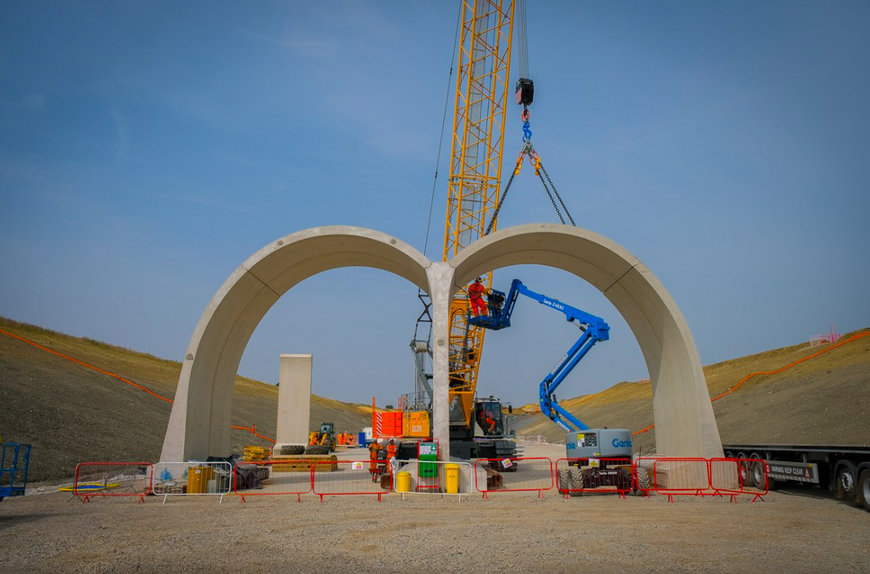smartbuildingmag.com
14
'23
Written on Modified on
HS2 News
WORK BEGINS IN WEST NORTHANTS ON HS2’S LONGEST ‘GREEN TUNNEL’
The 2.7km Greatworth ‘green tunnel’ will be built on the surface before being covered by earth, trees and shrubs to fit in with the Northamptonshire countryside.

HS2 has begun assembling the project’s longest ‘green tunnel’ - designed to blend the high-speed railway into the rural landscape and reduce disruption for communities around Greatworth in West Northamptonshire.
Unlike a bored tunnel, the shallow one-and-a-half mile (2.7km) tunnel is built using a ‘cut and cover’ process. This involves excavating cutting, building the tunnel and then burying it, with trees, shrubs and hedgerows planted on top to blend in with the surrounding countryside.
The tunnel structure will be made from more than five thousand giant concrete segments, made at a specialist pre-cast factory in Derbyshire, and assembled on-site by HS2’s main works contractor, EKFB - a team made up of Eiffage, Kier, Ferrovial Construction and BAM Nuttall.
Greatworth is one of five ‘green tunnels’ being built on phase one of the HS2 project, designed to improve links between London, Birmingham and the north, boost the economy and free up more space on the existing rail network for freight and local services.
Designed as an m-shaped double arch, the tunnel will have separate halves for southbound and northbound trains. Five different concrete precast segments will be slotted together to achieve the double arch which is the height of two double-decker buses - one central pier, two side walls and two roof slabs.
The tunnel will be built in sections, with construction of the main structure expected to take around two years. Local roads such as the B4525, Sulgrave Road, Helmsdon Road and access for Greatworth Park will be realigned to cross the tunnel, as well as local footpaths.
Tailored landscaping design plans are also being developed, with thousands of native trees and shrubs typical to the local area - such as Silver Birch, Oak, Beech and Willow - planted to create new woodland areas around the portals and recreate the hedgerows and field boundaries on top of the tunnel.
Shorter green tunnels are also being built at Wendover in Buckinghamshire, Burton Green in Warwickshire and in the London Borough of Hillingdon. All the tunnels will have specially designed ‘porous portals’ at either end to reduce the noise of trains entering and exiting the tunnel, along with small portal buildings to house safety and electrical equipment.
www.hs2.org.uk

